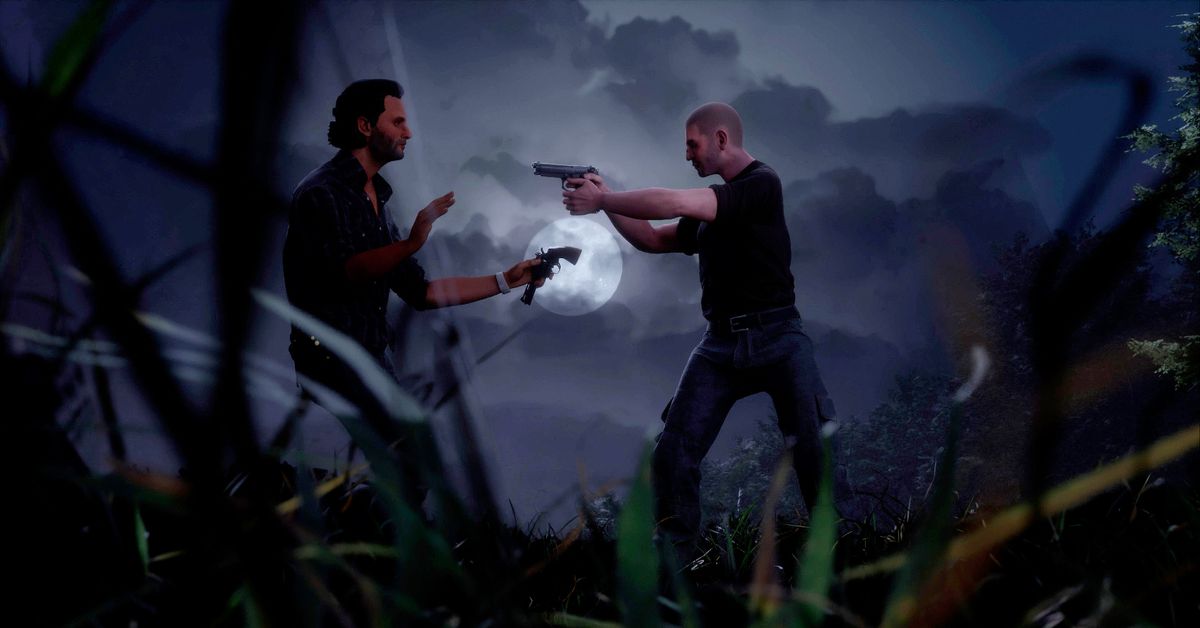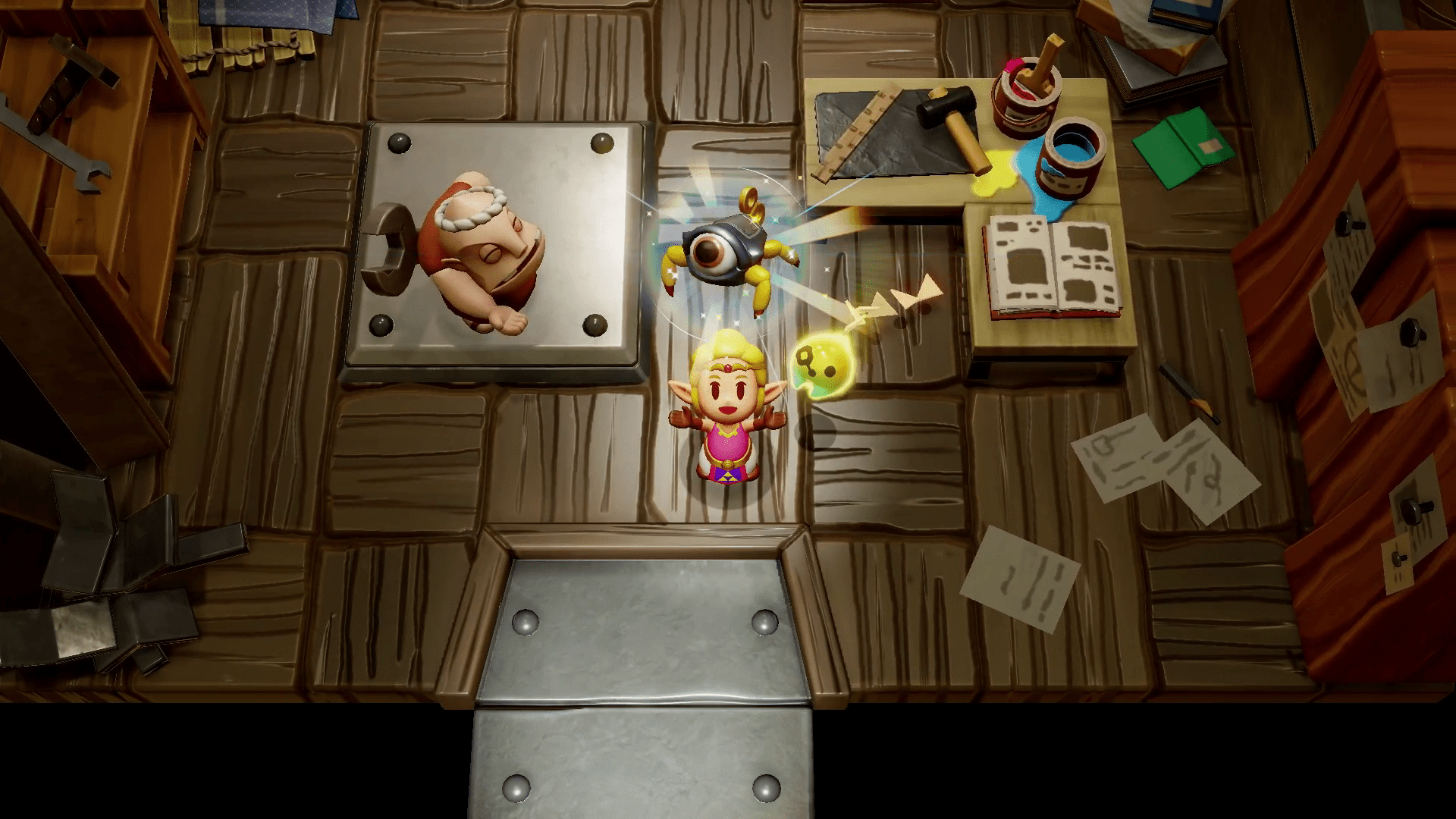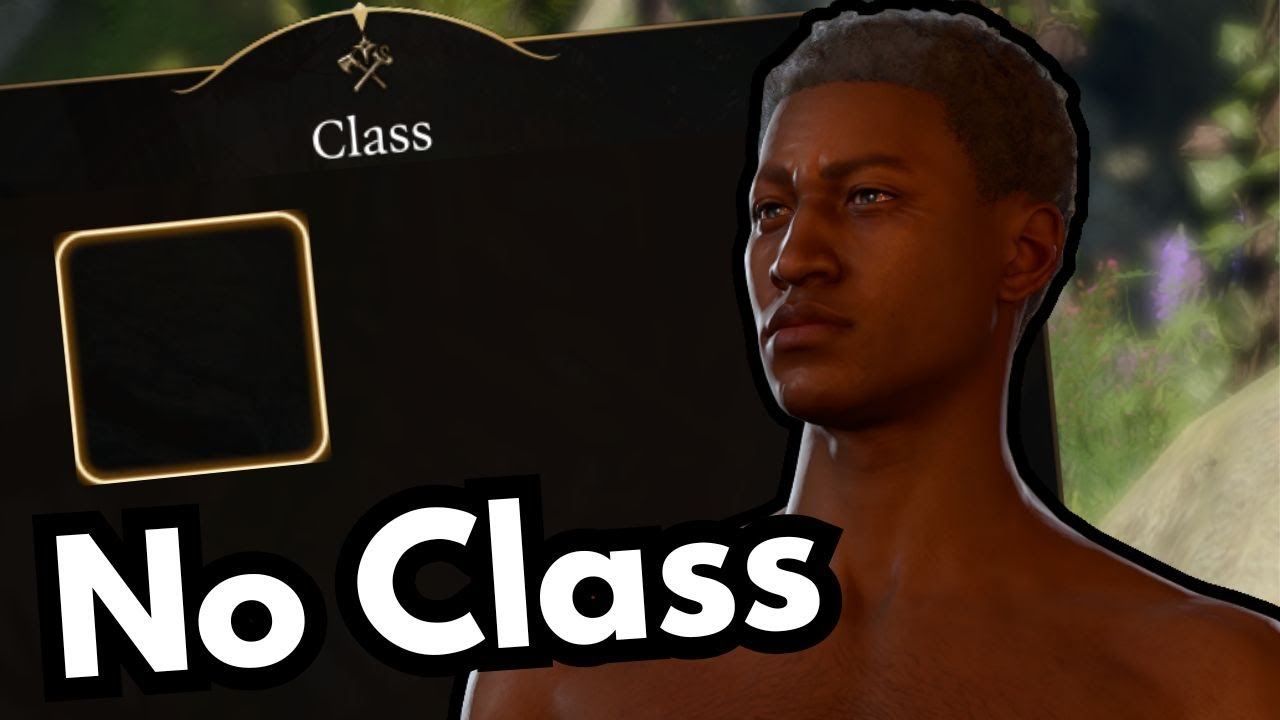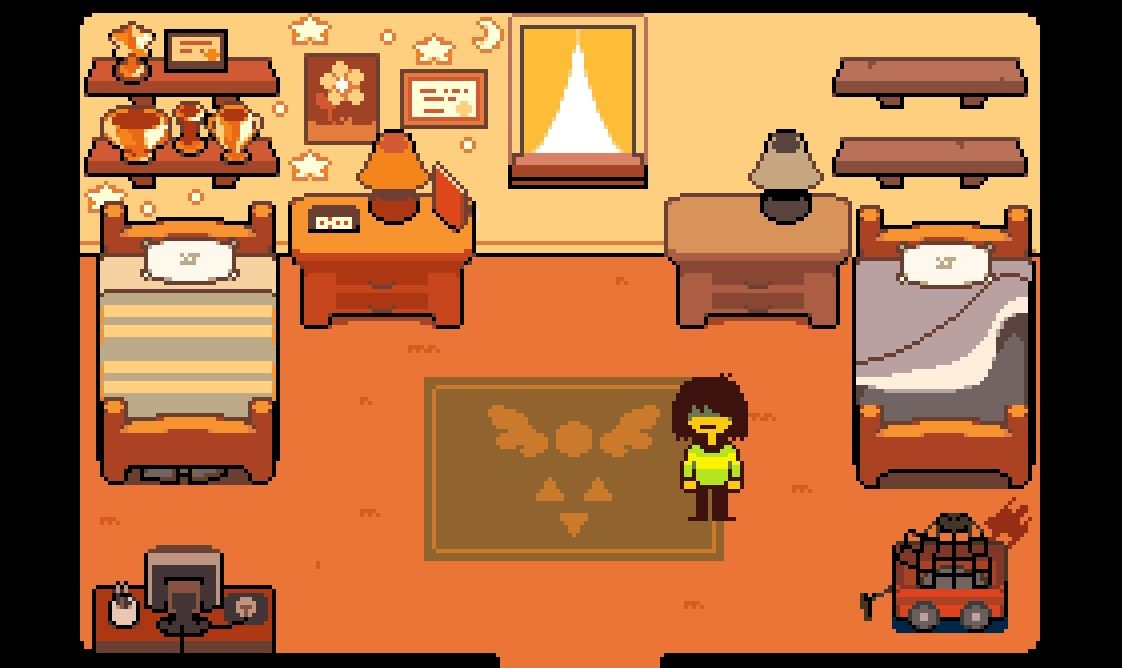There were few moments as iconic, during the birth phase of 3D gaming, as the first time Link stepped onto Hyrule Field in The Legend of Zelda: Ocarina of Time. It was 1998, and games like Virtua Racing, Doom, Descent, and Nintendo’s own Super Mario 64 had already made epochal strides in graphics technology and the possibilities of 3D space. But this was something else.
After completing the tutorial section of the game and navigating its first dungeon, Inside the Great Deku Tree, Link leaves the close, misty confines of Kokiri Forest, walks through a tunnel, and steps out the other side. The sudden, expansive flowering of the world of Hyrule around him is breathtaking. There’s a rolling plain, castle spires behind a wall, a hilltop farm, the brooding summit of Death Mountain. There are sightlines to destinations that may be dozens of hours of gameplay away.
Ocarina’s Hyrule Field — previewed so elegantly in the game’s quiet, elegiac menu screen — was not a technical first, and was achieved with a certain amount of smoke and mirrors. But it was perhaps the most powerfully persuasive translation yet of the coded iconography of a 2D game into the realism of a 3D one; it turned a map into a landscape. It hummed with promise, scale, and a romantic sense of adventure, and created a world that felt vast yet temptingly within reach.
:no_upscale()/cdn.vox-cdn.com/uploads/chorus_asset/file/25178660/zelda_ocarina_title.jpg)
That moment distilled the promise of what would eventually become the dominant form of both action-adventure and role-playing games in the 3D era: open-world games. Yet it would be almost 19 years before the Zelda series itself fully embraced open-world game design with Breath of the Wild. Despite Ocarina’s outsized influence on the next two decades of game design, the Zelda series followed a parallel path until 2017.
Returning to this revered classic in 2023 — for the first time, personally, since Breath of the Wild exploded the Legend of Zelda tradition — it’s stunning how different it feels. It’s the key text of what you might call Zelda’s second era (the pre-Breath of the Wild 3D games), and to a large extent it defined all of them — even those like the sunny, seaborne The Wind Waker that wriggled as hard as they could to get out from under its shadow.
Ocarina of Time was produced by Shigeru Miyamoto, leading a team of younger directors that included current Zelda producer Eiji Aonuma. Miyamoto’s vision was of a sophisticated, filigree, deeply authored game that would be as intricate as it was expansive. For Miyamoto, moving into 3D space wasn’t about letting the player run riot over a vast area. It was an invitation to look closer, to get into the cracks, to really learn the environment.
:no_upscale()/cdn.vox-cdn.com/uploads/chorus_asset/file/25178662/zelda_ocarina_deku.jpg)
So Ocarina of Time unfolds like an epic, three-dimensional Metroidvania. You explore its world of Hyrule in a looping, backtracking way that is nonlinear, but guided by a dense network of paths, locks, and keys — as well as by rumors and stories.
Link’s advancement is measured not in stat increases but in the steady acquisition of new tools that extend the player’s power over the environment. Gradually, you learn to manipulate not just space and material but time itself, turning day into night or striding across the years. And every single new tool or power is an invitation to go back and comb over the world once again, constantly cross-referencing it against your expanding toolset. What can I reach now? Where can I go? Or when?
This is doubly true once Link learns the Song of Time that allows him to step between sunlit present and dark future. As in A Link to the Past before it, Ocarina of Time tasks the player with flicking back and forth between twinned worlds, carefully studying the differences in their landscapes, and seeking out the wormholes of cause and effect between them. Link’s personal transformation as he moves back and forth between wild childhood and rangy adulthood gives this time-travel mechanic a poignant, intimate dimension: Every time you play the Song of Time, it feels like you leave a part of yourself behind.
:no_upscale()/cdn.vox-cdn.com/uploads/chorus_asset/file/24763168/ocarina_of_time_link_3.jpg)
:no_upscale()/cdn.vox-cdn.com/uploads/chorus_asset/file/25178663/zelda_ocarina_ganondorf.jpg)
Responding to this intricately conceived space, Ocarina of Time’s gameplay is heavily laden with puzzles and secrets. Combat is dramatic and impactful, but surprisingly sparse. The game is defined by its 11 fabulous and forbidding dungeons — dark, dense, and knotty labyrinths that pushed Miyamoto’s exploration of 3D space to its limit. Sometimes, Ocarina pushes past that limit in a series of unforgettable, dreamlike, impossible spaces: the damp, organic cavities of Jabu-Jabu’s Belly; the chamber of paintings out of which Phantom Ganon charges in the Forest Temple; the bright, fogbound limbo in the Water Temple where Link confronts his own dark shadow.
These dungeons dominate Ocarina of Time, and not just because you spend so much of the game inside them. In a way, the game is one huge dungeon, full of traps, mysteries, secret doors, and mazes, like the Lost Woods.
For nearly 20 years, every mainline 3D Zelda that followed Ocarina of Time was made in its image, but none of them quite managed the organic density of its design. They’re all brilliant games, but they all feel more compartmentalized, somehow: Majora’s Mask with its looping, clockwork diorama; The Wind Waker with its busy islands and empty sea; Twilight Princess with its strong narrative current; Skyward Sword with its discrete pocket universes, visited from above.
:no_upscale()/cdn.vox-cdn.com/uploads/chorus_asset/file/25178665/zelda_ocarina_artwork.jpg)
It wasn’t until Breath of the Wild that the Zelda series dared break from Ocarina’s template. Nintendo may have been late to the open-world party, but don’t underestimate the bravery it took to trash the rules written for a title that still regularly tops lists of the best games of all time.
In Breath of the Wild — and even more so in its sequel, Tears of the Kingdom — the landscape is a contiguous wilderness where obstacles occur naturally and events seem to unfold without any script. Link has many of the tools he’ll need at the start, and the player’s ingenuity is exercised as much in improvised responses to a teeming world as in unpicking the solutions to carefully constructed riddles. Dungeons, and the dozens of micro-dungeon-like shrines, are not the dominant note of the design. Rather, they’re punctuation marks breaking up the freewheeling exploration that truly defines the experience.
It turns out that, to get back to the way Ocarina of Time made us feel, it was necessary to reject almost everything about it. That’s one way you know it is a masterpiece. Another is that it still resists imitation, even by Nintendo itself. Ocarina gave us a profoundly influential vision of where gaming could go, but a specific and singular route to that destination. A quarter-century later, it’s still in a class of one.












